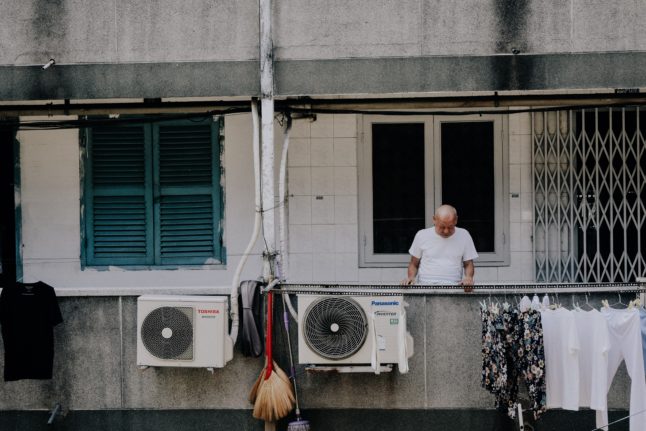As much of mainland Europe continues to be pummelled by extreme heat and buffeted by a volatile energy market in the wake of Russia’s invasion of Ukraine, several European countries have recently taken steps to reduce their use of fossil fuels.
At the end of July, EU member states made a voluntary agreement to reduce their gas consumption by 15 percent this winter, and a number have announced new measures aimed at meeting this target.
Spain’s government on Monday approved an ‘energy saving plan’ that sets temperature limits of 27C in the summer and 19C in the winter for AC units in public buildings, shops, cultural centres such as theatres and cinemas, and transport hubs such as train stations and airports.
These spaces must also install automatically closing doors by September 30th, and shop window lights must be turned off by 10pm.
In July Germany’s economy and climate minister laid out plans for an ‘energy security package’ that would, among other things, ban owners of private pools from heating them with gas over the winter, and suspend clauses in tenancy agreements that require renters to keep their homes above a minimum temperature.
And France’s government is working on an energy saving plan that will involve public administration, businesses and individuals, with the aim of cutting the country’s energy use by 10 percent over the next two years.
READ ALSO: Air-con, ties and lights: How Europe plans to save energy and get through winter without blackouts
By comparison, Italy’s efforts to conserve energy to date have been limited in scope (the CEO of the Italgas company told Reuters in July that Italy would not need to cut its consumption by 15 percent, as it had sufficient stocks to get it through the winter).
On May 1st, a law came into force regulating the temperature on AC units and radiators in public buildings until May 31st, 2023.
The temperature in these spaces must not exceed 19 degrees Celsius in winter and cannot be any lower than 27 degrees in summer, with a margin of tolerance of two degrees – meaning the lowest allowed temperature in the summer is actually 25C, and the highest in winter is 21C.
The measure does not currently apply to clinics, hospitals and nursing homes.
Fines for non-compliance with the rules range from €500 to €3,000, although it’s still unclear how checks or enforcement will be carried out.
READ ALSO: Milan blackouts blamed on air conditioning as heatwave intensifies
Italy hopes that these steps will result in savings of between 2 and 4 billion cubic meters of gas, allowing its to achieve its stated aim of weaning the country off Russian gas by the end of 2023.
According to recent reports, the government has discussed further measures to encourage the general public to cut their energy consumption, including restricting personal AC use and further limiting the use of heating in private homes this winter – though no such plans have yet been formally announced.
In fact, Italy will continue to offer tax discounts of between 50 and 65 percent on AC units until the end of this year as part of its 2022 building renovations bonus scheme – though the units must meet certain minimum energy efficiency standards.
Other energy-saving plans reportedly drawn up by the government – albeit for use in a worst case scenario – include the enforced early closure of shops, public offices, restaurants and bars.
A reduction in municipal electricity consumption has also been discussed, which could mean fewer street lamps and delaying switching on the lights in apartment blocks.



 Please whitelist us to continue reading.
Please whitelist us to continue reading.
Member comments